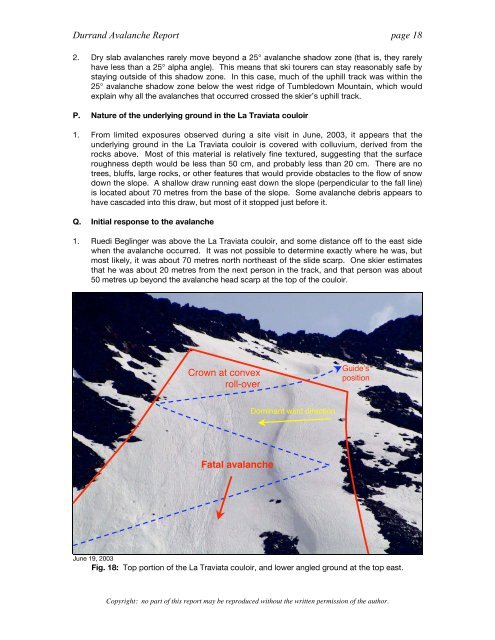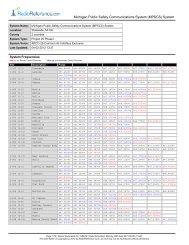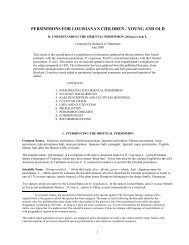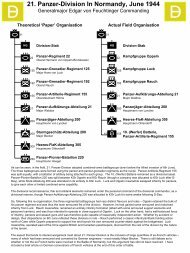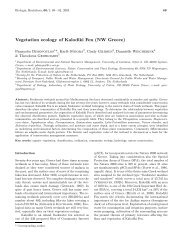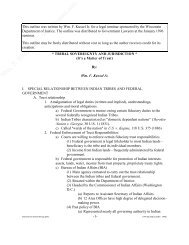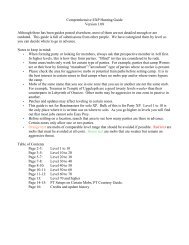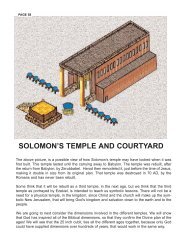Analysis of the Durrand Glacier Avalanche Accident
Analysis of the Durrand Glacier Avalanche Accident
Analysis of the Durrand Glacier Avalanche Accident
You also want an ePaper? Increase the reach of your titles
YUMPU automatically turns print PDFs into web optimized ePapers that Google loves.
<strong>Durrand</strong> <strong>Avalanche</strong> Report page 18<br />
2. Dry slab avalanches rarely move beyond a 25° avalanche shadow zone (that is, <strong>the</strong>y rarely<br />
have less than a 25° alpha angle). This means that ski tourers can stay reasonably safe by<br />
staying outside <strong>of</strong> this shadow zone. In this case, much <strong>of</strong> <strong>the</strong> uphill track was within <strong>the</strong><br />
25° avalanche shadow zone below <strong>the</strong> west ridge <strong>of</strong> Tumbledown Mountain, which would<br />
explain why all <strong>the</strong> avalanches that occurred crossed <strong>the</strong> skier’s uphill track.<br />
P. Nature <strong>of</strong> <strong>the</strong> underlying ground in <strong>the</strong> La Traviata couloir<br />
1. From limited exposures observed during a site visit in June, 2003, it appears that <strong>the</strong><br />
underlying ground in <strong>the</strong> La Traviata couloir is covered with colluvium, derived from <strong>the</strong><br />
rocks above. Most <strong>of</strong> this material is relatively fine textured, suggesting that <strong>the</strong> surface<br />
roughness depth would be less than 50 cm, and probably less than 20 cm. There are no<br />
trees, bluffs, large rocks, or o<strong>the</strong>r features that would provide obstacles to <strong>the</strong> flow <strong>of</strong> snow<br />
down <strong>the</strong> slope. A shallow draw running east down <strong>the</strong> slope (perpendicular to <strong>the</strong> fall line)<br />
is located about 70 metres from <strong>the</strong> base <strong>of</strong> <strong>the</strong> slope. Some avalanche debris appears to<br />
have cascaded into this draw, but most <strong>of</strong> it stopped just before it.<br />
Q. Initial response to <strong>the</strong> avalanche<br />
1. Ruedi Beglinger was above <strong>the</strong> La Traviata couloir, and some distance <strong>of</strong>f to <strong>the</strong> east side<br />
when <strong>the</strong> avalanche occurred. It was not possible to determine exactly where he was, but<br />
most likely, it was about 70 metres north nor<strong>the</strong>ast <strong>of</strong> <strong>the</strong> slide scarp. One skier estimates<br />
that he was about 20 metres from <strong>the</strong> next person in <strong>the</strong> track, and that person was about<br />
50 metres up beyond <strong>the</strong> avalanche head scarp at <strong>the</strong> top <strong>of</strong> <strong>the</strong> couloir.<br />
Crown at convex<br />
roll-over<br />
Fatal avalanche<br />
Dominant wind direction<br />
Guide’s<br />
position<br />
June 19, 2003<br />
Fig. 18: Top portion <strong>of</strong> <strong>the</strong> La Traviata couloir, and lower angled ground at <strong>the</strong> top east.<br />
Copyright: no part <strong>of</strong> this report may be reproduced without <strong>the</strong> written permission <strong>of</strong> <strong>the</strong> author.


